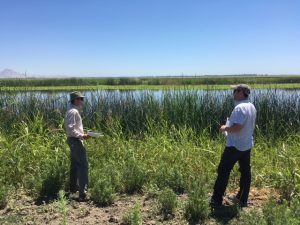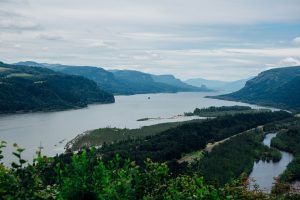As we reported in September 2020, the U.S. Army Corps of Engineers announced a proposal to reissue existing and issue new nationwide permits (NWPs) for categories of activities involving minimal amounts of discharges of dredged or fill material into wetlands or other waters of the United States. This form of streamlined approval to fill waters of the United States is critically important to developers and others in the regulated community because it enables applicants with qualifying projects to save significant amounts of permitting time and costs. Following through on that announcement, the Corps issued its final rule on January 13, 2021, reissuing and modifying certain NWPs. Continue reading
Articles Posted in Wetlands
Court Rules Against California’s Wetlands Regulatory Program
Last week, the Sacramento Superior Court delivered a serious blow to California’s regulatory program for the protection of wetlands and other waters of the State.
The State’s wetland protection program (commonly known as the “Procedures”), which became effective in May, was intended to create a regulatory structure to fill the gap left by recent Trump administration regulations that dramatically narrowed Federal wetland protections. Ironically, the court’s order prohibits the State of California from applying the Procedures to any waters other than those already protected by Federal law, thus leaving in place the very regulatory gap that the Procedures were intended to fill. Continue reading
Supreme Court Rules that Discharges to Groundwater May Be Regulated by Clean Water Act
The Supreme Court ruled today that pollutant discharges to groundwater may, in some instances, be regulated in the same manner as discharges to navigable surface waters. The decision was a clear rebuff to EPA, which argued that only direct discharges to surface waters are regulable under the Clean Water Act. Coincidentally, the Court’s decision was issued just two days following EPA’s publication of a controversial rule limiting the federal government’s Clean Water Act jurisdiction over wetlands and other surface waters. Continue reading
Court Eliminates Army Corps Nationwide Permit for Utility Crossings
In a far-reaching decision with sweeping implications, a federal district judge in Montana eliminated the Army Corps’ nationwide permit for utility line crossings over waters of the United States. This permit – known as Nationwide Permit 12 – was used to streamline approvals across the country for electrical lines, pipelines, and other utility projects resulting in minor encroachments on wetlands and other waters. Because of this decision’s scope, thousands of projects across the country – including projects in California – may be stalled as they re-think their permitting approach or await further direction from the courts. Even more troubling is the fact that this decision calls into question the legality of over fifty other nationwide permits intended to streamline project approvals, including those issued for housing, industrial, and other development projects Continue reading
Insight: Trump’s Clean Water Act Rollback – Implication For California
Clark Morrison and Scott Birkey co-authored an article for Bloomberg Environment where they examine the effect of the Trump administration’s California Clean Water roll-back, as well as the state’s response. Continue reading
Trump Administration Dramatically Narrows Scope of Federal Wetlands Protections
This morning, the White House announced adoption of its long-awaited redefinition of waters protected by the federal Clean Water Act. This new rule will significantly restrict the role of the U.S. Army Corps of Engineers and the U.S. Environmental Protection Agency in regulating discharges of fill or other pollutants into wetlands and other waters. Continue reading
New Endangered Species Act Regulations on the Horizon
Since President Trump took office in 2016, change is the new norm when it comes to environmental law. Within a month of taking office, the President proposed a dramatic narrowing of federal wetland protections under the Clean Water Act, resulting in a regulation that is now being finalized. The Trump Administration also issued an opinion limiting the scope of the Migratory Bird Treaty Act, narrowed the requirements for environmental impact statements under the National Environmental Policy Act, and rejected principle elements of the Obama Administration’s climate plan as well as the Paris Climate Accord. Now, the Trump Administration has issued numerous revisions to the regulations used by the U.S. Fish and Wildlife Service and the National Marine Fisheries Service to implement the Endangered Species Act.
On August 12, 2019, the Administration issued final rules for three separate rulemaking efforts to change certain key elements of the regulations used to implement the ESA. In our view, and contrary to the media firestorm surrounding the new regulations, these changes don’t amount to a “gutting” of the ESA. In fact, these rules don’t change the Endangered Species Act at all. Rather, they modify regulations which implement the ESA and which were adopted under previous administrations. Regulations are subject to change from time to time and, quite often, change with the political winds. Inevitably, what for some will be seen as harsh changes, others will perceive as needed reform. From our perspective as practitioners, the new regulations clarify a few procedural ambiguities and streamline some clunky aspects of the ESA’s regulations that we have been dealing with for years.
The new regulations are quite detailed. But in summary, below are some of the highlights: Continue reading
California Adopts Far-Reaching Wetlands Permit Requirements
Yesterday, the State Water Board adopted stringent new permit requirements for development projects in California that may impact wetlands or other surface waters. These new requirements have been in the works for a decade, but the Trump administration’s proposed rollback of federal wetland laws pro vided the impetus for adoption this year.
vided the impetus for adoption this year.
Cox Castle was heavily involved in the final negotiations over these regulations on behalf of the building and agricultural sectors. Although the program remains burdensome, those negotiations resulted in significant concessions that will reduce its impact on housing and farming.
The new requirements (the “Procedures”) will be implemented through existing state permitting structures. Most often they will be applied through regional water board sign-off (or “certification”) of Corps of Engineers wetland permits. They will also be applied where the federal government has no jurisdiction. Continue reading
The Unintended California Consequences of Trump’s Wetland Protection Rollback
There are no surprises in the President’s proposal to vastly narrow the definition of wetlands and other waters protected by the federal Clean Water Act. Within a month of taking office in 2017, the President issued an executive order directing EPA and the Corps of Engineers to begin that process.
Nor are there any surprises in the new definition itself. As expected, EPA and the Corps of Engineers propose to replace the Obama-era definition – which was based upon the Supreme Court’s Rapanos decision – with a much narrower definition proposed by late Justice Antonin Scalia.
Under the new rule, the Clean Water Act’s protections will extend only to truly navigable rivers and their tributaries, as well as wetlands abutting those rivers or having a direct hydrologic connection. The Clean Water Act will no longer protect millions of acres of wetlands found in different habitat types around the Country, including most of the vernal pools and other seasonal wetlands found throughout California’s rangelands and foothills.
Changes Coming to Wetland Regulations
An executive order signed by President Donald Trump in February may have major large impact on the way that wetlands are regulated at the federal level. The executive order rescinds a Clean Water Rule put in place during the Obama administration. To find out how this change could impact wetland regulation at both the federal level and in California, GlobeSt.com sat down with Scott Birkey, partner at Cox, Castle & Nicholson, for an exclusive interview.
GlobeSt.com: How has the Trump administration affected wetland regulations on a federal level?
Scott Birkey: This story is still being written, but the new administration started setting the stage last February when Trump issued an Executive Order asking the two federal agencies that regulate wetlands on the federal level, the Army Corps of Engineers and the Environmental Protection Agency, to review and essentially rescind the Clean Water Rule established during the Obama administration. By many accounts, the Rule expands the scope of those agencies’ permitting jurisdiction over wet features, even those features that arguably wouldn’t be considered wetlands in any normal sense of the word. The real turning point in this saga is yet to come, but we have a pretty good idea of what it will look like. The Order includes a seemingly innocuous paragraph that could trigger sweeping changes in the way wetlands will be regulated at the federal level. It requires the agencies to interpret the phrase “navigable waters” consistent with the views of Justice Scalia, who relied on Webster’s dictionary to conclude “waters” are “relatively permanent, standing, or continuously flowing bodies of water.” Compared to the Clean Water Rule and all other prior iterations of the wetland regulations, this view reflects a significant restraint on the agencies’ wetlands permitting authority.
GlobeSt.com: How might this affect the Obama administration’s Clean Water Rule?
Birkey: The wheels are already in motion to jettison and replace the Obama-era Clean Water Rule with regulations that would significantly restrain the federal government’s scope of permitting authority over the fill of wetlands. What’s somewhat ironic is that the Clean Water Rule emerged to help clarify, at least ostensibly, the confusion created by a string of well-known wetland regulation cases decided by the Supreme Court. As a practical matter, I doubt that Scalia’s more commonsensical approach to defining “waters,”—which in turn establishes the sideboards for the agencies’ jurisdictional reach—will itself be that easy to implement, regulate, or enforce. We’re sure to see more litigation over this wordplay. This all may sound inane, but the fact is that tagging the phrases “navigable waters” or “waters of the United States” to wet features on a piece of property proposed for development can saddle that project with permitting hurdles that could result in significant time delays and costs.
regulation cases decided by the Supreme Court. As a practical matter, I doubt that Scalia’s more commonsensical approach to defining “waters,”—which in turn establishes the sideboards for the agencies’ jurisdictional reach—will itself be that easy to implement, regulate, or enforce. We’re sure to see more litigation over this wordplay. This all may sound inane, but the fact is that tagging the phrases “navigable waters” or “waters of the United States” to wet features on a piece of property proposed for development can saddle that project with permitting hurdles that could result in significant time delays and costs.
GlobeSt.com: What does this mean for wetland regulations in California?
Birkey: I and others have written elsewhere that the guiding principle here is nature abhors a vacuum. What we’re likely to see is the state becoming more emboldened to fill regulatory gaps created by the new federal administration’s pullback from regulating wetlands. This is almost a certainty, given that the state has been working for over a decade on a set of wetland regulations that would specifically apply to those wetlands that are not classified as federal “waters of the United States” subject to permitting authority under the Clean Water Act. The State Water Resources Control Board issued a preliminary draft of the regulations in July 2017. The Board anticipates approving the regulations by winter 2017, which under normal circumstances is fairly aggressive in light of the controversy the regulations have generated, but because of the federal pullback from wetland regulations, that timeframe could be an almost certainty. Put simply, this federal pullback likely will result in a state pushback, where California acts more aggressively to ensure the wetlands left behind after Trump’s re-write of the wetland regulations will be regulated by the state.
GlobeSt.com: Can we expect another layer of regulatory oversight in the state?
Birkey: Absolutely, and that’s really the point of the state’s new wetland regulations. To be fair, the state previously has had the ability to regulate wetlands deemed “waters of the state.” But the state’s new wetland regulations will create a permitting mechanism almost identical to the federal permitting regime, mirroring the relatively onerous and time-consuming protocols currently used by the Corps to process wetland fill permits. So, for example, we can expect to see the state requiring applicants to justify their project is the “least environmentally damaging practicable alternative,” or “LEDPA,” an almost magical, albeit clunky, formulation that’s needed before a wetland fill application can be approved. The process to reach this determination requires significant documentation and environmental analysis, including a boundary delineation of the wetlands, an assessment of off-site and on-site alternatives to the proposed project, a review of the project’s other environmental impacts, and a description of compensatory mitigation to offset the project’s impacts. This level of processing and documentation is a sea change from what we’re used to seeing in the state. And so, from that perspective, the new regulations are effectively another layer of regulatory oversight in the state.
GlobeSt.com: How will this regulatory change affect developers with ongoing projects, and what do developers need to know?
Birkey: The draft regulations include a placeholder for their effective date, and so we don’t know yet when they’ll apply. For developers with projects proposing wetland fills after the effective date—get ready! You’ll see a new and heightened level of state agency scrutiny bringing with it increased compliance costs and time delays. Those of us familiar with the Corps’ permitting process know how onerous it can be to obtain a Section 404 permit—think wetland delineations, application forms, environmental review compliance, alternatives analyses, mitigation proposals. Imagine a nearly identical process at the state level. Another troublesome aspect is that it’s not yet clear how the new regulations will apply to projects that are also subject to the federal wetland permitting process. For some projects, there could be an inefficient duplication of agency efforts where, to give an extreme example, an applicant may be required to produce two alternatives analyses—one for the federal permitting effort and another for the state. This example and others I could give suggest we’re likely to see analysis inconsistencies and agency confusion as the new regulations roll out. Not helpful for a state still struggling to meet housing and other construction demands.
 Lay of the Land
Lay of the Land


